In honor of Earth Month—and Earth Day later this week—we’re celebrating the best way we know how: with a series of stories that are all about getting outside and getting your hands dirty to benefit wild places and wildlife. Every day this week, we’ll share articles about habitat projects
, and conservation calls-to-action. Welcome to Dirt Week.
Invasive wildlife species aren’t bad by nature: The trouble starts when they go where they’re not wanted. When animals are transplanted to areas where they have no predators or other environmental checks, they can wreak havoc on habitat, threaten native wildlife, and levy huge economic costs. In the U.S. alone, 6,500 alien species take an estimated $123-billion bite out of the economy annually—numbers that might make you throw up your hands and ask, “What can I possibly do?”
One answer, according to some who’ve found a way to fight back, is “dig in.” Holding invasive species cook-offs, publishing recipe collections, and enlisting celebrity chefs in their cause, some defenders of native fish and wildlife are adopting a new motto: If you can’t beat ‘em, eat ‘em. Here are eight invasive species you can hunt—or catch—and bring home for dinner.
1. Feral Pigs

Feral pigs looking for food in the woods. imageBROKER/Erhard Nerger via Getty Images
There’s a reason a total lack of restraint is called going “hog wild.” If you’ve ever seen the destruction feral pigs can visit on a food plot, crop field, or suburban lawn, that $123 billion damage estimate might seem a tad conservative. According to the U.S. Department of Agriculture, some 9 million feral swine inhabit 31 states—most densely across the south. From the tip of Florida to the Oklahoma panhandle all but a handful of counties have confirmed pig populations. Contrary to what some claim, wild hogs
are the descendants of domestic escapees: Handled correctly in the field and kitchen, they can be just as delicious.
2. American Bullfrog
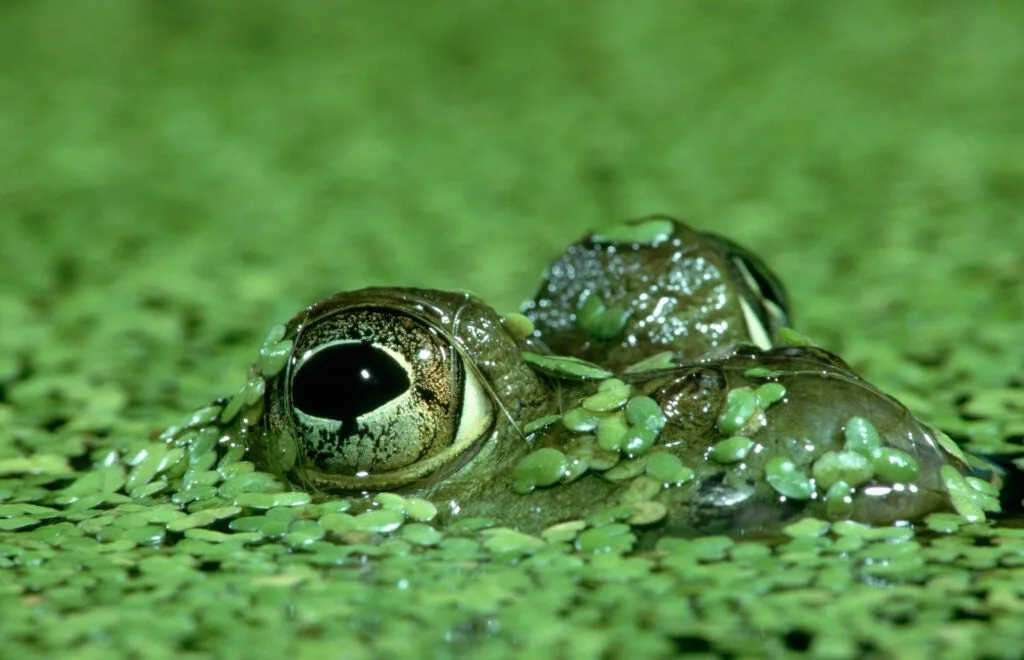
Bullfrogs are native to much of the U.S., but in places like Hawaii, they’re a problem. Joe McDonald via Getty Images
An eating machine that devours ducklings, rats, bats, bass, and other bullfrogs with equal abandon, the American bullfrog is native throughout much of its U.S. range, which stretches from central Florida to Nova Scotia, from the Atlantic Coast to Wisconsin, and across the Great Plains to the Rockies. But in areas where it has been introduced—like California, Arizona, and Hawaii—this voracious predator has exploded, outcompeting (and often eating) native Western frog species. The largest frogs in North America, bullfrogs can stretch beyond a foot long, with legs extended, and weigh more than 1 pound_._ Cuisses de grenouille anyone?
3. Nutria
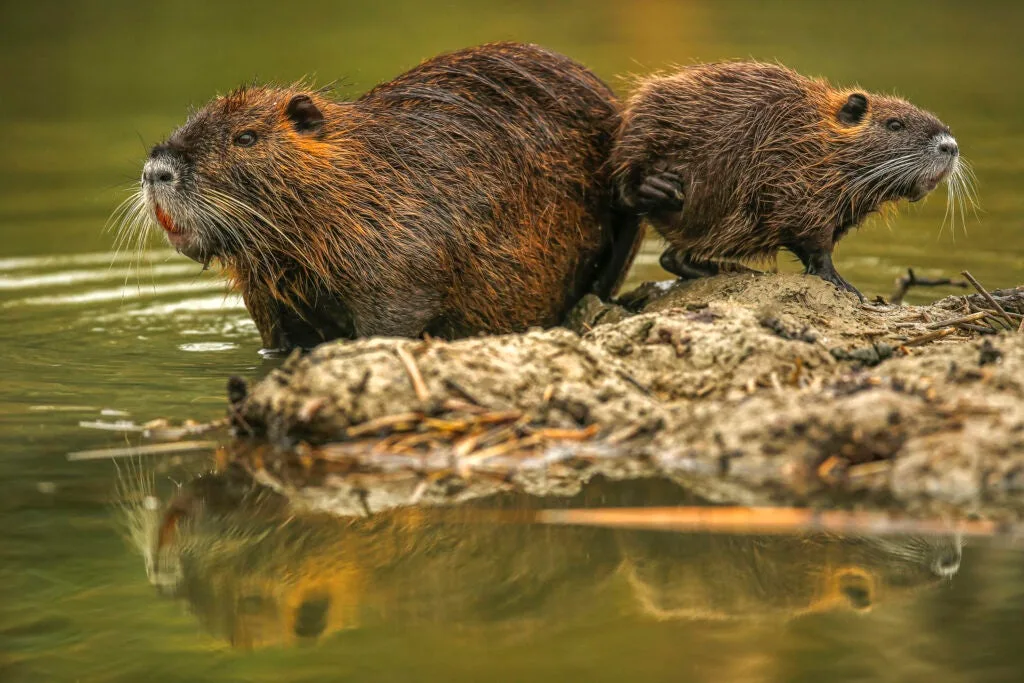
Nutria were introduced to the U.S. for the fur trade. Milko Marchetti via Getty Images
Fried squirrel is as far out on the tree of life’s rodent limb as I care to venture at suppertime. Still, a recipe for “Heart Healthy Crockpot Nutria” from They’re Cooked
—an invasive species cookbook—doesn’t sound half bad, with its abundance of vegetables and a white wine demi-glace. Believe it or not, this aquatic South American native was deliberately brought to the U.S. in 1889 as an alternative to mink, and millions were harvested for the fur trade until fickle fashion left the swamp beaver out of style. They are now found in at least 20 states. In Louisiana, citizens can sign up for the Statewide Nutria Control Program and earn $6 for every Nutria tail they turn in. With an adult capable of reaching 20 pounds, that should leave plenty for the pot.
4. Northern Snakehead
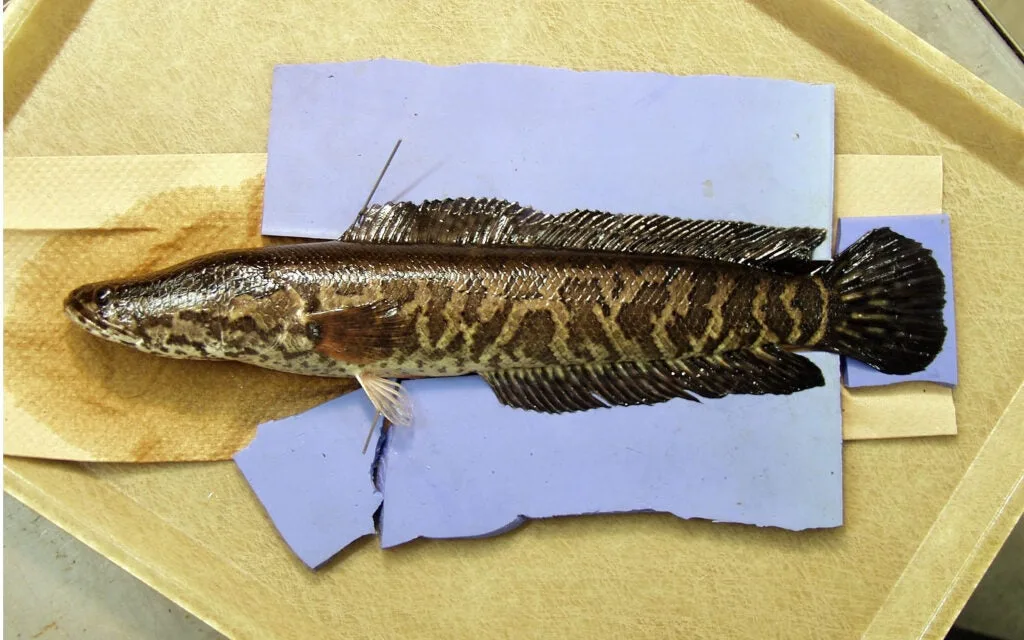
Snakeheads are aggressive and defend their nests against other fish. Getty Images
This sinisterly named fish looks mean, but its flavor is mild-mannered. In the hands of a competent angler-cook, the white, flakey flesh is hard to ruin. Delivered fresh from the Potomac to the kitchen of a celebrated D.C. chef, as I was lucky to try it off-menu once, it’s transcendent. First detected in Maryland in 2002 and thought to have been released by a local fish market, the Southeast Asian native spread along the Atlantic coast south to Florida and as far north as Massachusetts. Snakeheads are prolific breeders and fierce defenders of their young (they spawn twice a year or more and both parents guard the nest), producing exceptionally fast-growing offspring capable of reaching 20 pounds.
5. Asian Carp

Benjamin Lowy via Getty Images
This catchall term covers four carp species—bighead, black, grass, and silver—imported from Asia for use in aquaculture ponds. Escapees spread throughout the Mississippi River system, where the quick-growing, voracious herbivores are causing big problems for native fish. Their maddening habit of launching themselves from the water at the sound of an approaching motor
creates hazards for recreational boaters as well. The explosive growth of Asian carp, which has spawned several large-scale control projects, is a textbook example of how invasive species suck up tax dollars. The U.S. Army Corps of Engineers announced earlier this year that it will spend $226 million for a massive lock and dam near Rockville, Illinois, that will employ an array of technological barriers (an air-bubble curtain, an electric barrier, a flush lock, and an underwater acoustic fish deterrent) to keep the four species out of the Great Lakes. The total cost of the project is estimated to be $858 million.
6. Lionfish
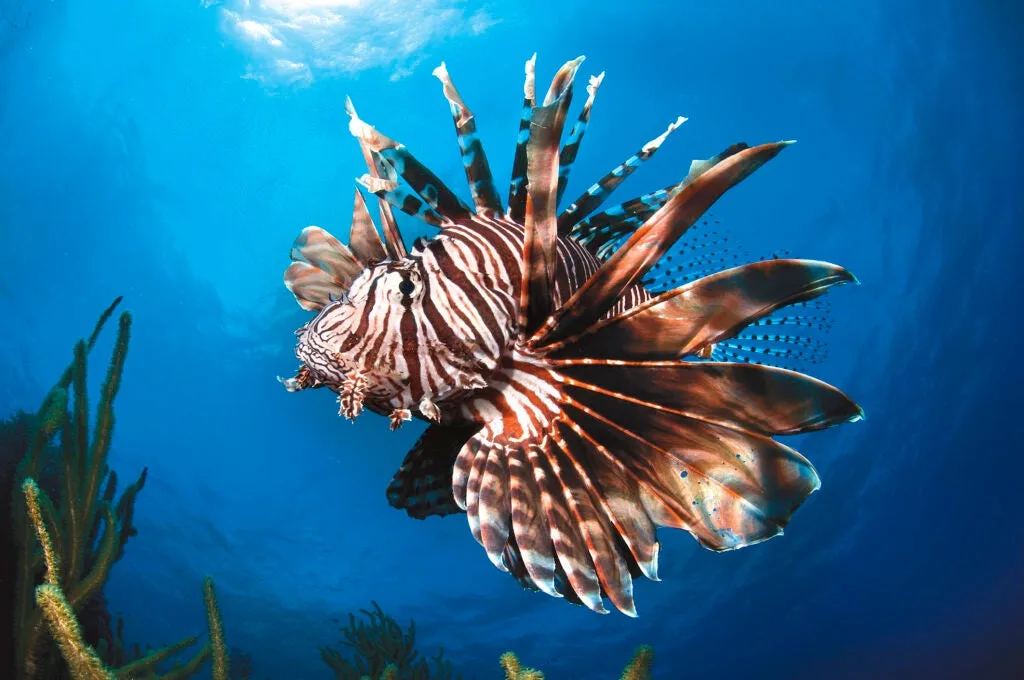
When prepared correctly, lionfish are edible. Federico Cabello via Getty Images
With a bristling array of poisonous spines and a stomach capable of expanding 30 times to accommodate its ravenous appetite, lionfish devour huge numbers of reef-dwellers who don’t recognize this Indian Ocean native as a threat. Imported for the aquarium trade and likely dumped in the Atlantic by owners tired of seeing it eat every fish in their tank, lionfish were first spotted off the Florida coast in the mid-80s and have spread north to Rhode Island and south to Brazil. Spearfishing is the most effective hunting method, and lionfish roundups like one in Florida last year that drew over 180 divers and removed more than 21,000 of the spiny invaders
are increasingly popular. In 2010 the National Oceanic and Atmospheric Administration launched an “Eat Lionfish” campaign that enlisted prominent chefs, and even Colombian priests have even been asked to urge their congregations to eat lionfish during Lent.
7. Green Iguana
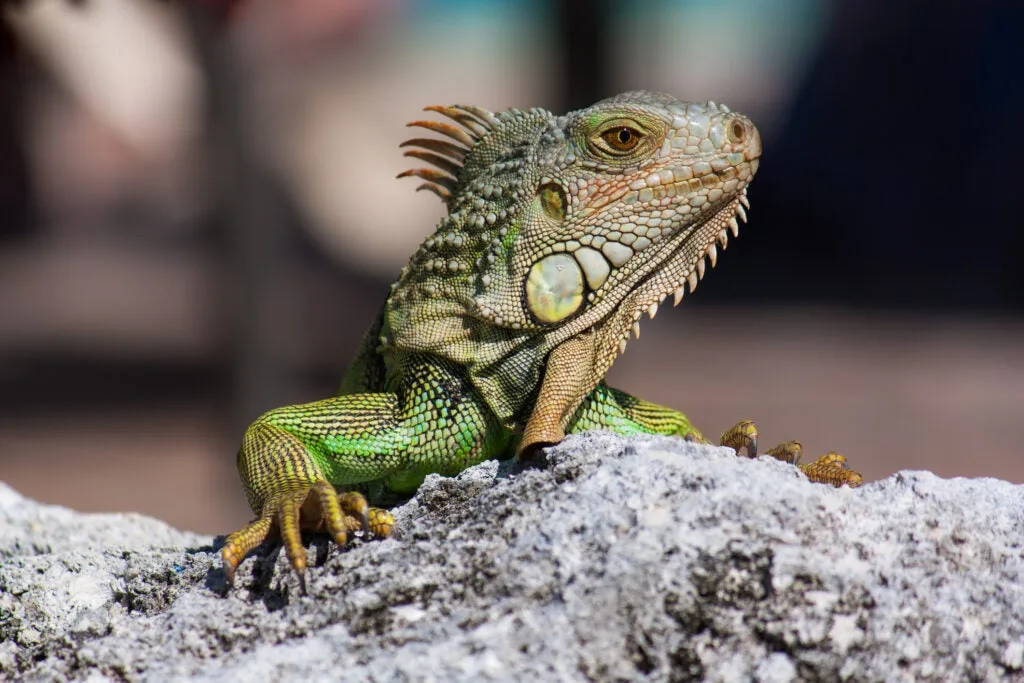
Iguanas destroy landscaping and are an invasive species in Florida. Hari via Getty Images
Native to Central America, tropical South America, and some eastern Caribbean islands, green iguanas are considered nuisance animals in south Florida because they eat ornamental plants and burrow extensively. In 2021 they were added to the state’s prohibited species list. Like pythons, they can be harvested year-round
on private property (with landowner permission) and on some public lands without a permit or hunting license. Green iguanas can reach 5-feet long and weigh up to 17 pounds, and their meat—a popular taco filling—reportedly tastes like chicken, with a texture like crab.
Read Next: Florida Has a New Invasive Species. And It Is Big—and Ugly
8. Armored Catfish
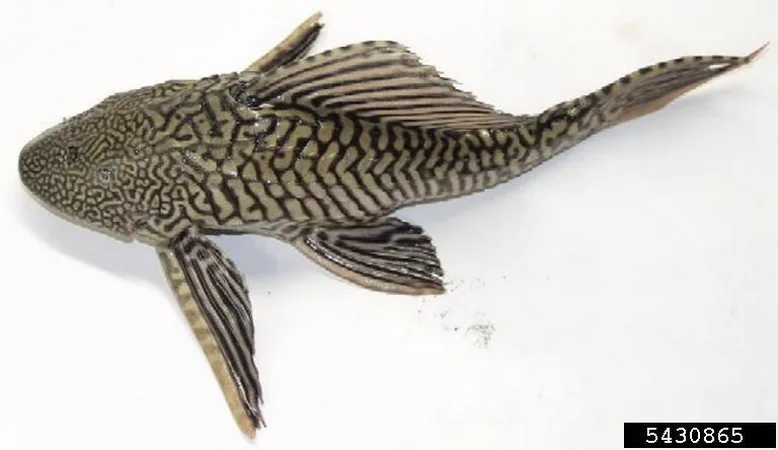
Armored catfish can be found in Texas, Florida, and Hawaii. USGS
These freshwater Amazon River natives have invaded Texas, Florida, and Hawaii, where their tolerance for brackish water, ability to breathe air, and bony spines employed for self-defense make them a tough fish to eradicate. In Mexico, where they were intentionally released to control algae, the species’ destructive habit of burrowing deep into banks to build nests led fishermen to dub it pez diablo—devil fish. The firm, hardy texture of armored catfish flesh is said to be a good substitute for ground meat in burgers and meatballs, and its thick hide (composed of bony plates, not scales) makes whole-grilling or roasting a good play.





